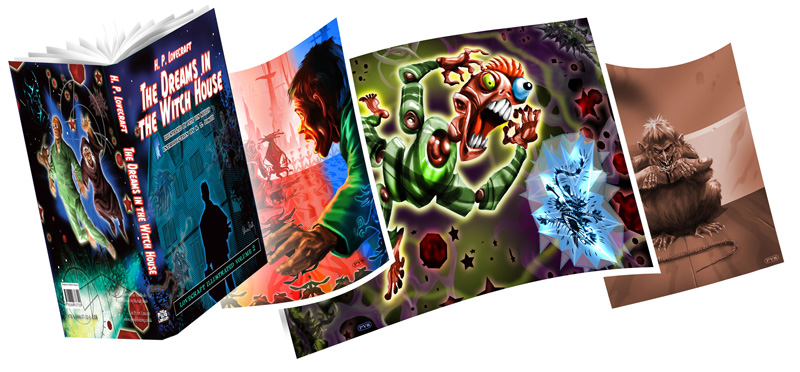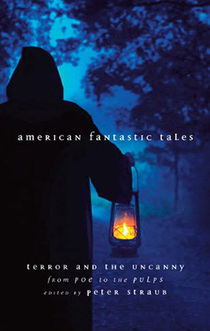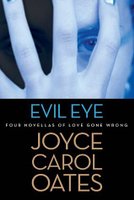Exploring persecution and seduction narratives in works by Shakespeare, Hawthorne and Oates
Perhaps the easiest narrative to employ in tales involving witches and their craft is one based on persecution. There are two main roles the witch character can play in such a narrative. On one hand, we have the witch as an object of persecution, wherein the real or metaphoric witch is viewed as an evil creature in need of retribution and these punishments can range from social shunning to outright murder. On the other hand, we have witch as persecutor, wherein the witch has been offended, attacked, had their trust violated, or otherwise ire raised and thereafter unleashes a specifically targeted revenge against the intentional or accidental offender(s).
Of course, the persecuted witch narrative ties directly into vast numbers of historic examples and is use is almost guaranteed to hit the emotional response buttons of anyone who has been bullied or oppressed. Fictional examples can be drawn from a variety of sources that span genres, including works such as:
- Lois Duncan’s Gallows Hill (touched upon in the first of this series on the Witch Figure), where a young exchange student finds herself on the receiving end of popular student cruelty for exhibiting a supernatural awareness of secrets.
 Arthur Miller’s The Crucible, which utilizes the Salem Witch Trials to tell a tale of people wrongfully accused and punished for acts of witchcraft, a comment upon his time’s McCarthyism.
Arthur Miller’s The Crucible, which utilizes the Salem Witch Trials to tell a tale of people wrongfully accused and punished for acts of witchcraft, a comment upon his time’s McCarthyism.- Alice Hoffman’s Practical Magic, where a family of witches finds themselves on the receiving end of right-thinking citizens’ zealousness.
These days, the phrase witch hunt has come to mean the unlawful or irresponsible hounding of innocent persons for suspected guilty activity. Of course, it was rooted in the anti-witch hysteria striking western civilization in the fifteenth through eighteenth centuries, the American red scare of the 1950s, satanic panic in the 1970s and 1980s, as well as anti-Muslim activities in the twenty first century. Though the trappings have changed, the core persecution of unpopular stances remains.
At its heart, the witch as persecutor narrative plays into either the fears of the people we judge suddenly finding power over us or of the fantasy to find ourselves empowered over those who have betrayed and hurt us. This can be viewed as the ultimate underdog rising to have its day, and the outcome depends upon whether the witch is protagonist or antagonist. This narrative can be found in fairy tales as well as numerous horror stories, such as Lovecraft’s “Dreams in the Witch House“, featuring a student of mathematics and folklore caught up in the time/space bending mystic machinations of the seemingly immortal witch Keziah Mason and her familiar Brown Jenkin. The crime is not his own, the student is the seemingly random victim of a room cursed with Keziah Mason’s odd angles, which the witch uses to access our world to acquire the sacrificial subjects she needs.

Of course, simply because persecution is the easiest narrative to employ does not mean it is the only one. There is a spin on the persecution theme that finds just as much use, and will be the main point of interest in this chapter’s consideration. I am speaking here of seduction.
By seduction, I am not simply referring to sexual seduction. At its heart, seduction can be viewed as the promise of sharing some secret knowledge or experience. This can take a sexual, purely intellectual, or a spiritual aspect.
Seduction can be an inciting element of a tale or it can be a narrative weapon used during a character’s journey. It should not be surprising to note that seduction and persecution narratives are often employed in tandem in the same story. However, in many of the examples I can think of, one of these narrative elements is submissive to the other. Often times (as in the examples cited above), the persecution narrative takes the primary place in the story being told. However, seduction can take the primary position as well, as we shall explore in the following stories under consideration.
#
The most obvious place to start is with Shakespeare’s MacBeth. Here we find a trio of weird sisters, servants of the goddess of magic, Hecate, who use their knowledge of the future to seduce the titular Scottish noble/warrior to ambitious dreams and bloody deeds. Upon meeting him, they hail him as thane (lord) of two different Scottish regions and then King. When the lordships come to pass, their promise of kingship is enough to set his mind going about their third prediction. With the helpful insistence of his equally ambitious wife, Macbeth sets upon a trail of regicide, murder and madness.
 The weird sisters who offered the initial seduction return for a second prognostication, which turns out to foreshadow MacBeth’s own destruction (though he is too blind to see it). They play a simple role and their seduction ploy is merely glimpses from the future. Yet as simple as this may seem, those glimpses are enough to set the drama going.
The weird sisters who offered the initial seduction return for a second prognostication, which turns out to foreshadow MacBeth’s own destruction (though he is too blind to see it). They play a simple role and their seduction ploy is merely glimpses from the future. Yet as simple as this may seem, those glimpses are enough to set the drama going.
And in an interesting twist, the witches who incite the play’s dark events never themselves come to dire ends. They escape the persecution storyline altogether, and remain in the world ready and able to offer similar wisdom to the unwary. Their continued presence in the world is a cautionary tale for the audience.
#
Nathaniel Hawthorne should be no stranger to wide readers of American fiction. One of the Romantics, he made a name for himself with numerous dark tales, including The House of the Seven Gables and The Scarlet Letter. The story of his that most immediately applies to the subject of this series on Witches In Fiction, however, is his tale “Young Goodman Brown.”
 Those unfamiliar with the piece are encouraged to seek it out. It is an atmospheric a tale, and has found homes both in various reprint anthologies (including the first volume of the American Fantastic Tales edited by Peter Straub and made available through The Library of America) as well as online.
Those unfamiliar with the piece are encouraged to seek it out. It is an atmospheric a tale, and has found homes both in various reprint anthologies (including the first volume of the American Fantastic Tales edited by Peter Straub and made available through The Library of America) as well as online.
The story deals with a nighttime journey of the titular Goodman Brown, the Younger. Though his pretty wife Faith bids him stay home and leave in the morning, he has “evil business” to keep, which can only be accomplished during the hours between dusk and dawn, and therefore decides to leave despite his wife’s wishes. On the road, he finds himself shivering first at the realistic ideas of angry natives lying in ambush and then to the more fanciful idea of the Devil himself appearing. Almost immediately after the latter idea strikes him, Brown encounters the man he arranged to meet. This figure is downright devilish, and though Goodman Brown initially rejects having anything more to do with the man, he finds himself seduced into continuing his night time journey through the woods in the fellow’s company. Along the way, he discovers secrets about his fellow townspeople – each of the most seemingly trustworthy citizens in this Massachusetts community are witches and on their way to a black mass to welcome in a fresh young face. Could this be Brown’s own or someone else? A dreadful curiosity takes the better of his convictions to return home to his faith (the allegories are obvious, as most allegories are), and the journey Brown began is never quite abandoned. However, the seduction to witchcraft itself is never fully embraced, and when the midnight coven is attended, Brown finds himself faced with the moment of ultimate decision. His rejection of the coven is a victory of sorts for his spirits, but as the denouement of the tale shows, making such a decision has its own brand of consequences. The tale assures us these consequences play a long lasting role on the titular character’s life, coloring his relationships not only until his dying day but well after he is in the ground.
As with several of Hawthorne’s tales, the narrator of this particular story is unreliable (though the identity is never quite disclosed). Following Brown’s journey, questions arise as to whether the witchcraft elements actually happened or were dreams had by a man fallen asleep in the woods. The narrative itself is also dreamlike, seducing the reader just as the real-or-imagined dark powers seduce the protagonist. In the end, when the character is caught in questions of faith, the reader is likewise able to embrace or reject the “reality” of the tale’s events.
Seduction here is unaccompanied by a persecution narrative. It is the sole purpose of the main story line, drawing this man away from both his spiritual faith, his wife, and the comfortable life he had led. Like a jealous lover, the powers that attempted to seduce Young Goodman Brown do not leave him unchanged.
#
The seduction narrative playing central role to Hawthorne’s fiction and Shakespeare’s play continue to find home in prose works through the modern day (although the allegorical and symbolic elements thankfully transition to more subtle metaphors). As a case in point, let’s consider Joyce Carol Oates’ novella “Evil Eye”.
“Evil Eye” was first published in Boulevard magazine before becoming the title piece in Oates’ four novella collection Evil Eye in 2013. The novella can easily be read as a straight, supernatural free narrative, as a synopsis can show:
 Mariana is obsessed with her identity as the “fourth wife” to her new husband Austin. She is a somewhat timid character, a gothic romance heroine who finds herself subjugated by a domineering older man. When Austin’s first wife (Ines) arranges to stop by Austin (and ostensibly Mariana)’s apartment to visit, Mariana must confront her own dread of this woman and Austin’s niece (Hortensa) who is accompanying her. Over the course of the dinner, Mariana learns several dark secrets from her husband’s past, things that call his character into question: Ines points out the mysterious circumstances behind her son’s SIDS death, laying responsibility for the death at her then-husband’s feet; further, she tells Mariana that when Hortensa was thirteen, “not so plain faced, and not so heavy”, she “fell prey” to Austin and so each year, Hortensa accompanies Ines during these visits to show him that Hortensia “has not been broken by him” (Evil Eye, page 53). At the story’s conclusion, Mariana is faced with a decision of what to do with this new knowledge: should she take action or try to live with a man she suspects of being abusive, a liar, and a child killer? The choice she makes is non-obvious and yet inevitable. The resolution is chilling.
Mariana is obsessed with her identity as the “fourth wife” to her new husband Austin. She is a somewhat timid character, a gothic romance heroine who finds herself subjugated by a domineering older man. When Austin’s first wife (Ines) arranges to stop by Austin (and ostensibly Mariana)’s apartment to visit, Mariana must confront her own dread of this woman and Austin’s niece (Hortensa) who is accompanying her. Over the course of the dinner, Mariana learns several dark secrets from her husband’s past, things that call his character into question: Ines points out the mysterious circumstances behind her son’s SIDS death, laying responsibility for the death at her then-husband’s feet; further, she tells Mariana that when Hortensa was thirteen, “not so plain faced, and not so heavy”, she “fell prey” to Austin and so each year, Hortensa accompanies Ines during these visits to show him that Hortensia “has not been broken by him” (Evil Eye, page 53). At the story’s conclusion, Mariana is faced with a decision of what to do with this new knowledge: should she take action or try to live with a man she suspects of being abusive, a liar, and a child killer? The choice she makes is non-obvious and yet inevitable. The resolution is chilling.
The story line itself is weighty even without fantastic trappings. However, Oates works supernatural elements into the narrative in subtle yet intriguing ways. The opening image is of an amulet to ward off the evil eye. Both the warding amulet and images of eyes recur throughout the piece, motifs that even find their way into the title. Mysticism hums along beneath the prosaic story elements, and the main thrust of the piece is ultimately Mariana’s choice between staying allied to her husband despite her mounting suspicions or succumbing to the seductive knowledge the first wife and niece offer.
The ages of the three women presented here are suggestive of the tripartite found in classic witch covens: the maiden, mother and crone (see the weird sisters in MacBeth above). Ines and Hortensa are two of the three, and Mariana falls somewhat into the third slot (though her age is given as about the same as Hortensa’s). She seems to be the least experienced of the three women, the most maiden-like of the lot; however, she is an unwilling ally to the women from the get go. As the narrative follows the preparations for the gathering and then the events during that gathering, Mariana finds herself tempted into their company. The final decision then is ultimately a bookend to Young Goodman Brown’s: Should Mariana stay in a state of fidelity and good faith to her spouse or use the knowledge gleaned from questionable (and possibly otherworldly) sources to take decisive, murderous action? The character’s decision in this novella takes a different form than in Hawthorne’s work, and yet its consequences have equal reach. They will color the rest of Mariana’s life and likely linger beyond it.
Oates’ narrator is relatively unobtrusive though not wholly absent, as a question of reality or illusion does find its way into the prose just as in “Young Goodman Brown”, this time revolving around whether or not Ines is missing (of course) an eye. This is a rich motif, offering both a Biblical allusion to offensiveness in sight as well as to questions of clear vision. The uncertainty as to whether or not the missing eye is true (Austin claims Ines has two peepers, while Mariana is shocked and ghoulishly fascinated by the empty socket) presents a supernatural quandary in a nutshell: Can there be things women are capable of seeing, which men remain blind to?
The seduction elements pervade this text, from the opening page to the final, even though the physical source of this seduction does not arrive on stage until midway through the story. We see a few choice moments from Austin’s “courtship”, a few moments from the early days of their marriage, and while these might have been Austin’s attempts to tempt his new companion, they end up as character witnesses against the husband’s trustworthiness. He is a jackass, playing the role of father to a woman he ultimately wants to conquer both sexually and intellectually. Ines’ presence casts a long shadow on Austin’s life and home, so much so that fourth wife Mariana cannot change the position of furniture set down by the first wife without receiving a tongue lashing that should by all rights have left red marks.
Matching the single location, the mood of this piece is claustrophobic, and when the unwanted guests arrive it reaches a paranoiac whirl that leaves both Mariana and the reader somewhat dizzy as to who they should trust. Ultimately, Mariana and the standoffish niece Hortensa catch most of my sympathies (no doubt owing to the bad behavior Austin shows throughout the work), but I can see how some readers might be tempted to find something worth liking in Austin, trying to parse out his real actions and rationales instead of relying upon the subtly unreliable story’s portrayal of them.
However, as strong as the seduction narrative is, it does not work alone in Oates’ story. “Evil Eye” includes a persecution narrative thread, as well. Here, Austin has committed wrongs and Ines, Hortensa, and (eventually) Mariana are his tormentors.
#

Seduction, then, has a strong presence in witch-related narratives. But why?
Whether it is used as a means of snaring potential prey or of enlisting an ally, seduction is an imparting of knowledge. In the case of a witch narrative, this knowledge acts like a weapon, empowering those strong enough to embrace it and destroying those weak enough to reject it.
Viewed another way, seduction is a contest of wills. The witch is a willful character almost by definition. Whether one uses the Law put forth by Aleister Crowley to Do what thou wilt, or taking the witch as a character who has attained an uncommon level of understanding about the world, nature or the cosmos, the witch embraces understanding and can use this illumination to the benefit and detriment of others. Attaining employable knowledge is attractive, stimulating, possibly dangerous; maintaining ignorance is comforting, and the quality of ignorance is itself a soothing opiate. Is it any wonder, then, that a complex archetype like the witch would be linked to the seductive quality of privately shared wisdom? By extrapolation, can witch-centered narratives escape seduction or persecution elements? This is something to consider as we continue our own journey.
#
Next time, we will take a look at these items viewed through a different lens, in the works of master fantasist, Fritz Leiber. I hope you’ll join me.
Primary Bibliography
Oates, Joyce Carol. Evil Eye. (New York: Mysterious Press, 2013).
Straub, Peter (ed.) American Fantastic Tales: Terror and the Uncanny from Poe to the Pulps. (New York: The Library of America, 2009).
This article copyright © 2016 by Daniel R. Robichaud.
3 thoughts on “The Pull of the Other is So Strong : Considering the Witch Figure (Part 2)”